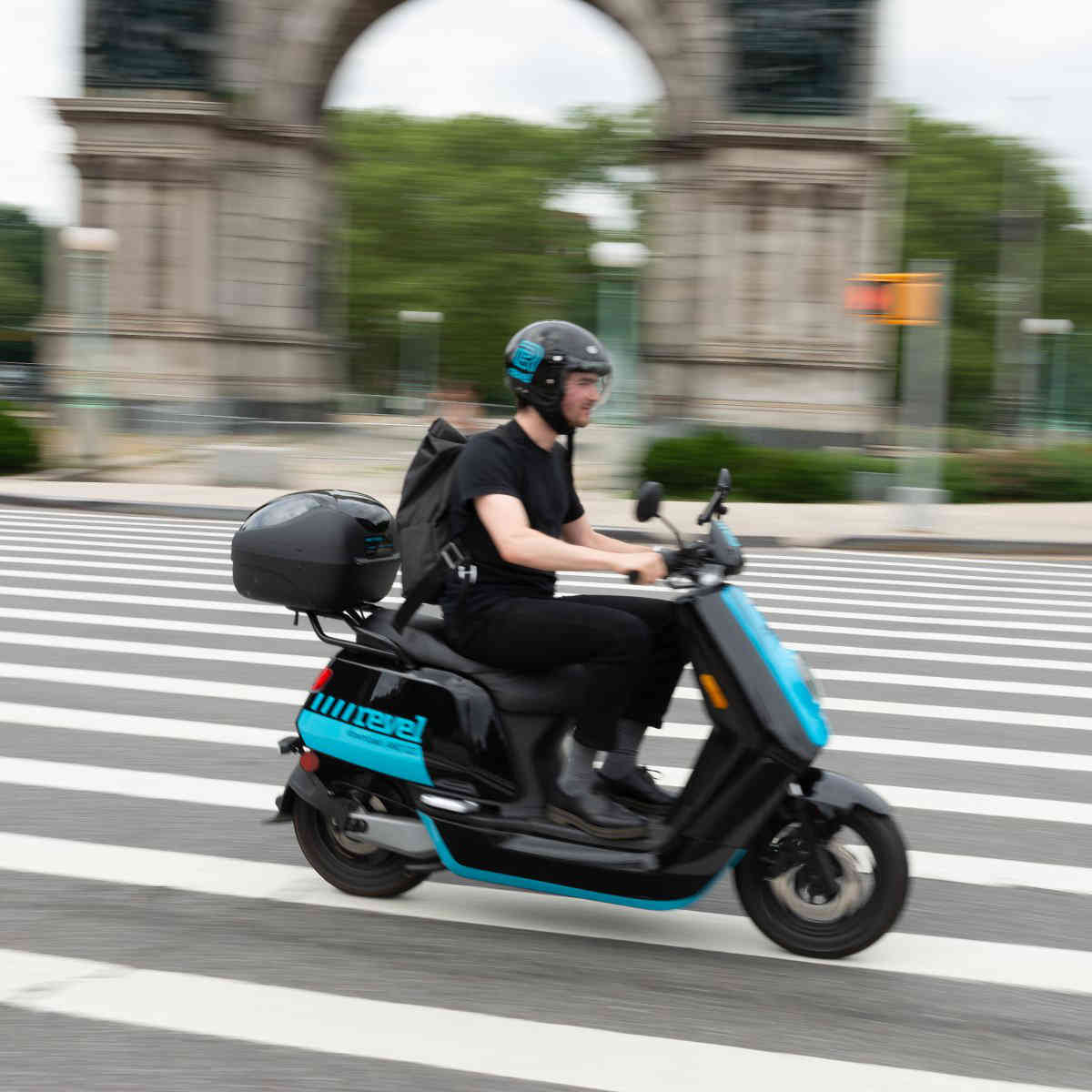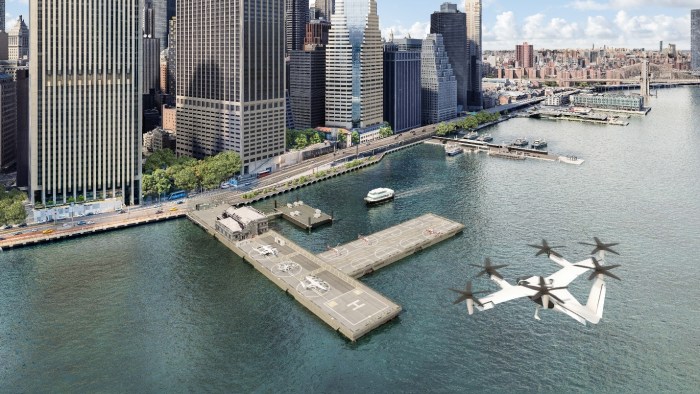They shall not pass.
The city has asked Revel to hit the brakes on its mopeds crossing the Manhattan and Queensboro bridges less than two months after the Brooklyn-based scooter-sharing company opened the East River spans to its thousands of users.
“We’ve been thrilled to see so many riders Reveling responsibly over the bridges,” reads a Sept. 17 email from Revel to its customers. “Unfortunately, we’ve received notice from the New York City Department of Transportation that we need to close access to these two bridges. Therefore, moving forward Revels will not be allowed on either crossing.”
The company on July 21 let riders “unlock” the two bridges after clocking 25 miles of driving safely on the blue battery-powered two-wheelers.
“Now you have no excuse to not visit your friend across the river,” read the email at the time.
DOT’s Revel moped moratorium move shuts off the only two available connectors for Revel riders between Manhattan and Brooklyn or Queens.
The transportation company never authorized scooter trips across the Brooklyn or Williamsburg Bridges — which are also run by the city — or the state-operated Hugh Carey (Brooklyn-Battery) Tunnel, Queens Midtown Tunnel and RFK (Triborough) Bridge.
The Vespa-like vehicles top out at 29 miles-per-hour and the company said in the announcement that riders should stay in the right lane and that those who didn’t feel comfortable going at top speeds should avoid the bridges, where the speed limit is higher at 35 mph.
A DOT spokesman said the agency asked Revel to reverse this policy citing “safety concerns” about the rental mopeds colliding with other vehicles on the bridges — acknowledging that drivers “sometimes” break the speed limit — along with the issue of Revelers choosing to scoot illegally down the pedestrian or bike paths on the spans.
“Safety is our top priority, and as part of our working relationship with Revel, we communicated safety concerns about the policy change the company had made,” said the DOT’s Brian Zumhagen. “The speed limit on these two spans is 35 miles per hour, traffic sometimes moves faster, and there are no shoulders on the spans. As a Revel moped cannot travel faster than 28 mph, there is a risk for crashes with faster moving cars.”
“Revel users may opt to illegally use the bike and pedestrian paths on these spans to avoid car traffic on the main spans, creating a serious safety risk to cyclists and pedestrians,” the DOT rep added. “As a result, we asked Revel to reverse the policy, and they complied. We look forward to continuing to work with Revel and other e-moped services to ensure the safety of their riders and all street users.”
Amid a boom in new Revel users during the summer of 2020, three riders crashed and died on the blue scooters and the company shut off service for a month before launching with more safety measures, including a mandatory 21-question quiz and a helmet selfie riders must take before they can roll.
A Revel spokesman declined to comment on the record beyond the customer email, but noted that no incidents with the scooters led to the ban and that personally-owned mopeds can still legally use these roadways.
Fourteen minor bridges remain open for Revel riders, such as the Pulaski Bridge between Brooklyn and Queens, the Roosevelt Island Bridge, and several spans across the Harlem River between northern Manhattan and the Bronx.
Read more: Brooklyn Riders Frustrated with New LIRR Schedules





































